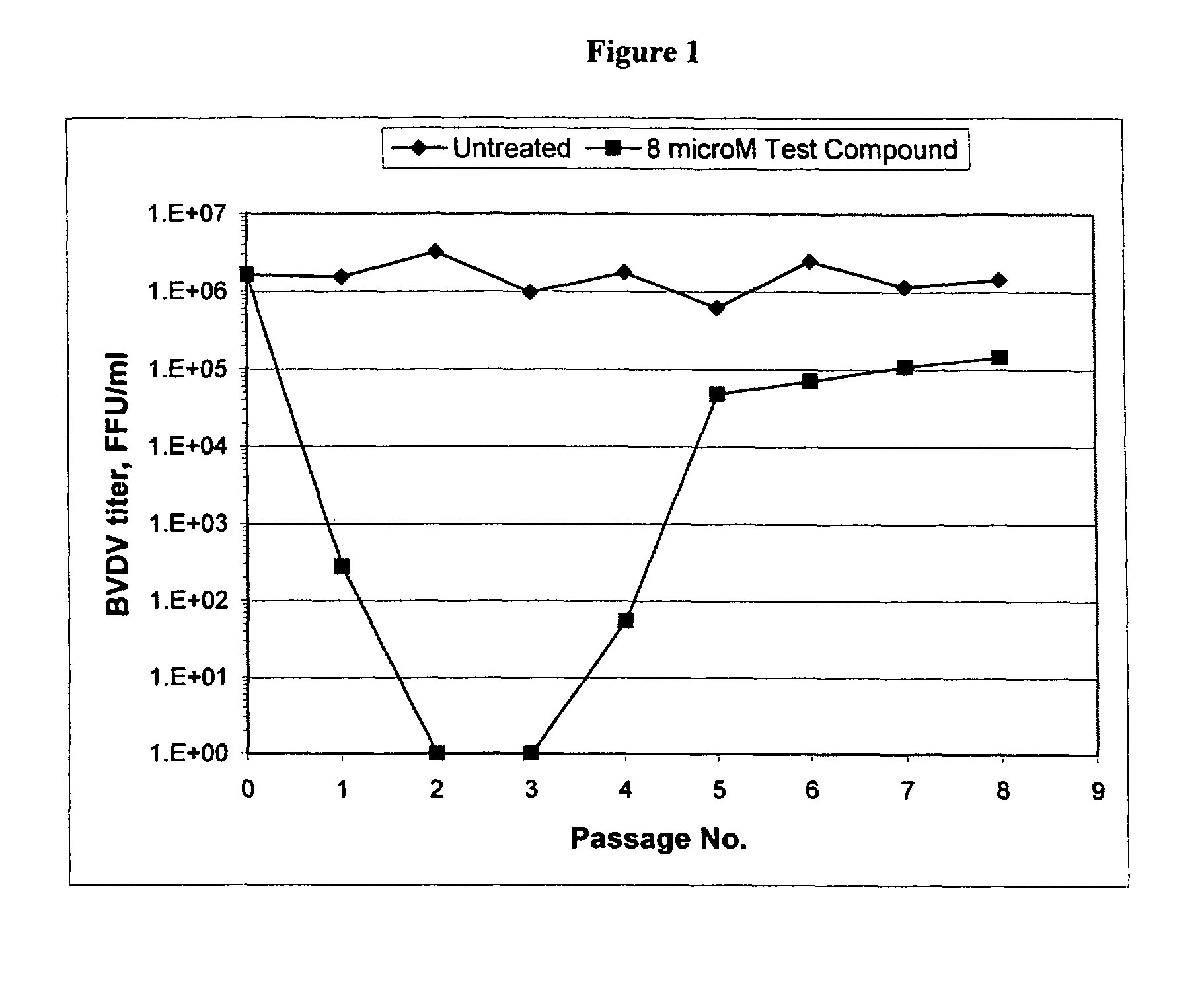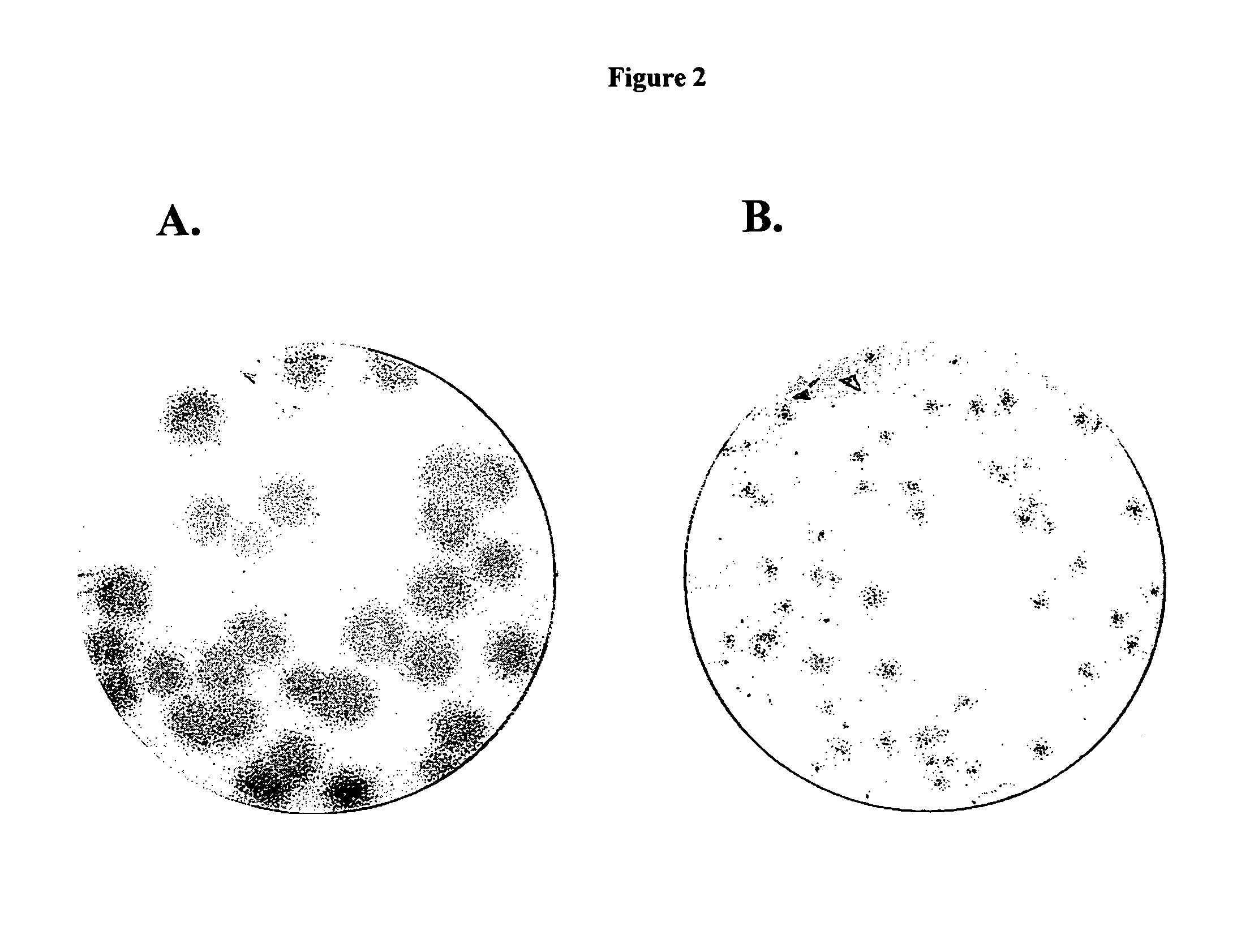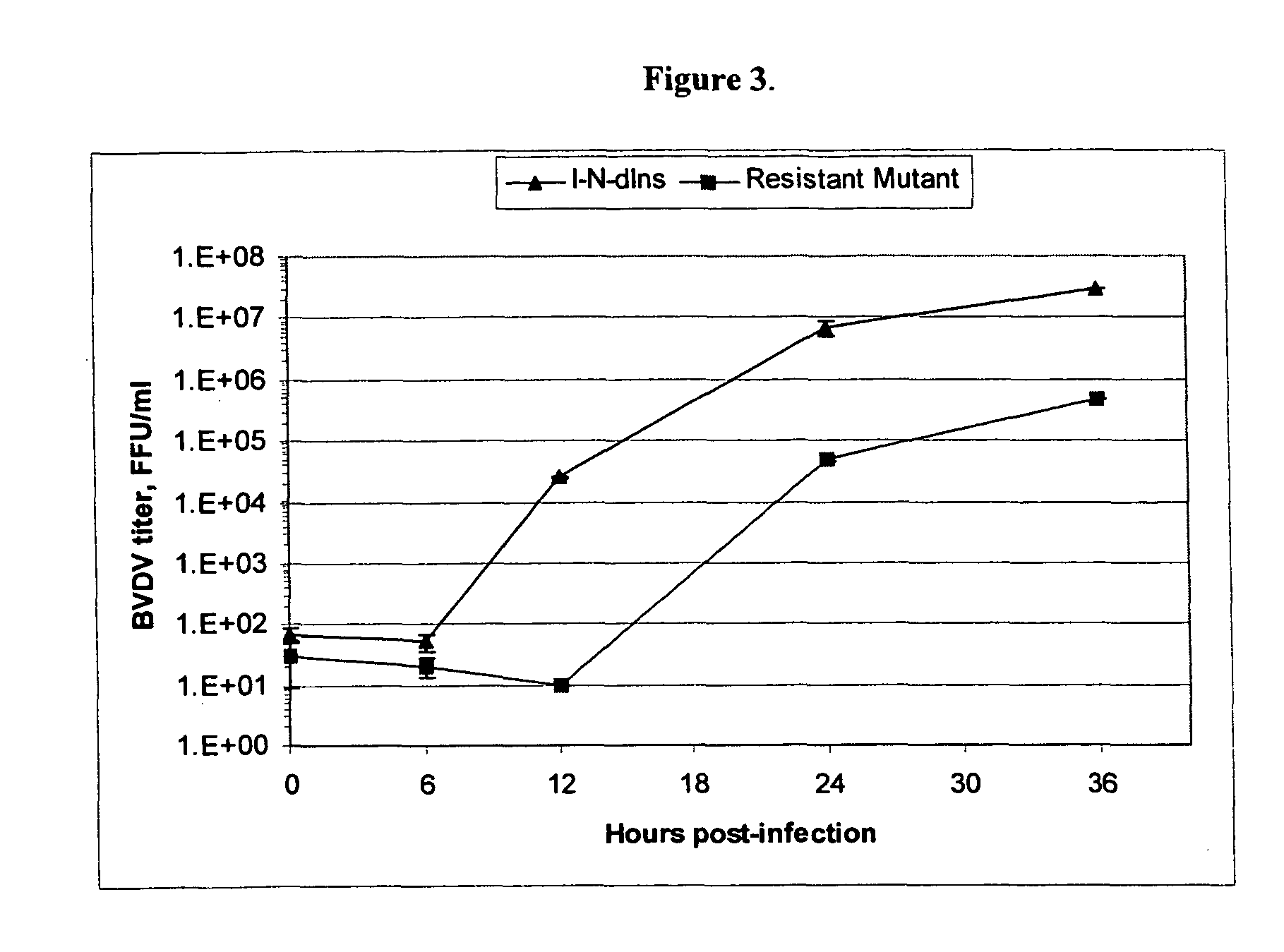2′-branched nucleosides and Flaviviridae mutation
a technology of flaviviridae and nucleosides, applied in the field of treatment of flaviviridae infection, can solve the problems of significant economic loss worldwide, significant pestivirus exposure, hepatocellular carcinoma and liver failure, etc., and achieve the effect of reducing the sensitivity to subsequent treatment and increasing the sensitivity to infection
- Summary
- Abstract
- Description
- Claims
- Application Information
AI Technical Summary
Benefits of technology
Problems solved by technology
Method used
Image
Examples
example 1
Isolation of β-D-2′-CH3-riboC-resistant BVDV
[0538]Persistent BVDV infection was established in MDBK cell line (ATCC, Manassas, Va., Catalog #: CCL-22) by in vitro infection of naive cells with a noncytophatic (ncp) BVDV (strain I-N-dIns; Dr. R. Donis, U. of Nebraska, Lincoln, Nebr.). The multiplicity of infection (MOI) was 0.01. Cells were passaged twice per week (splitting ratio 1:15) until the stable high-level of infection (106-107 focus forming units (FFU) per mL) was achieved, as was determined by a focus assay. Next, the persistently infected cells were grown in 6-well culture plates with 8 μM or without β-D-2′-CH3-riboC (Idenix Pharmaceuticals). Cell cultures were passaged every three to four days by splitting with a ratio of 1:15 to 1:20. After eight passages, cell cultures grown in the presence of β-D-2′-CH3-riboC were expanded to T-75 culture flask, freeze / thawed twice, and used as a virus stock of β-D-2′-CH3-riboC-resistant BVDV for further characterization. The virus tit...
example 2
[0542]The growth kinetics of both wild type and the β-D-2′-CH3-riboC-resistant BVDV were compared. MDBK cells were seeded onto 6-well plates (2×105 cells per well) and grown at 37° C. / 5% CO2 overnight. Cells were infected with BVDV I-N-dIns or the β-D-2′-CH3-riboC-resistant mutant, I-N-dIns β-D-2′-CH3-riboC-R, at a multiplicity of infection of 0.1. After a 1-hour adsorption, the inoculum was removed, and cells were washed with PBS and then overlaid with 2 mL of fresh growth medium. For BVDV I-N-dIns β-D-2′-CH3-riboC-R, duplicate wells were prepared in the presence or absence of 8 μM β-D-2′-CH3-riboC. Cell cultures were incubated at 37° C. / 5% CO2. At 0 (the end of the adsorption period), 6, 12, 24, 36, 48, 60, 72 hours post-infection, the cultures were frozen / thawed twice, and virus titers were quantified by the focus assay as described above.
[0543]At 12 hours post-infection, the wild type virus progeny reached a significant level of over 104 FFU / mL, consistent w...
example 3
Evaluation of the Resistance to β-D-2′-CH3-riboC
[0544]The selected BVDV variant (1-N-dIns β-D-2′-CH3-riboC-R) is more resistant to β-D-2′-CH3-riboC than the wild type BVDV since it can stably replicate to a reasonably high levels in MDBK cells in the presence of the compound for a long period of time (at least 72 days) without changes in the phenotype nor in the virus titer levels. To quantitate this resistance, a virus yield reduction assay was performed, using both the wild type and the variant virus.
[0545]To conduct the virus yield reduction assay, MDBK cells were seeded onto 24-well plates (1×105 cells per well) and grown at 37° C. / 5% CO2 overnight. Cells were infected with BVDV at a multiplicity of infection of 0.1. After 1-hour adsorption, the inoculum was removed, and cells were washed with PBS and then overlaid with 1 mL of fresh growth medium, containing serial 2-fold dilutions of the test compound (0-32 μM for β-D-2′-CH3-riboC and 0-800 IU / mL for Intron®A). After incubatio...
PUM
| Property | Measurement | Unit |
|---|---|---|
| Magnetic field | aaaaa | aaaaa |
| Volume | aaaaa | aaaaa |
| Volume | aaaaa | aaaaa |
Abstract
Description
Claims
Application Information
 Login to View More
Login to View More - R&D
- Intellectual Property
- Life Sciences
- Materials
- Tech Scout
- Unparalleled Data Quality
- Higher Quality Content
- 60% Fewer Hallucinations
Browse by: Latest US Patents, China's latest patents, Technical Efficacy Thesaurus, Application Domain, Technology Topic, Popular Technical Reports.
© 2025 PatSnap. All rights reserved.Legal|Privacy policy|Modern Slavery Act Transparency Statement|Sitemap|About US| Contact US: help@patsnap.com



